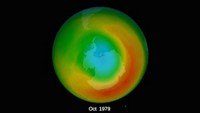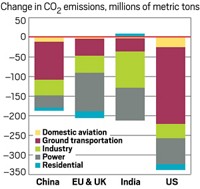Advertisement
Grab your lab coat. Let's get started
Welcome!
Welcome!
Create an account below to get 6 C&EN articles per month, receive newsletters and more - all free.
It seems this is your first time logging in online. Please enter the following information to continue.
As an ACS member you automatically get access to this site. All we need is few more details to create your reading experience.
Not you? Sign in with a different account.
Not you? Sign in with a different account.
ERROR 1
ERROR 1
ERROR 2
ERROR 2
ERROR 2
ERROR 2
ERROR 2
Password and Confirm password must match.
If you have an ACS member number, please enter it here so we can link this account to your membership. (optional)
ERROR 2
ACS values your privacy. By submitting your information, you are gaining access to C&EN and subscribing to our weekly newsletter. We use the information you provide to make your reading experience better, and we will never sell your data to third party members.
Atmospheric Chemistry
Prohibited CFC production pinpointed to northeast China
Region’s emissions of ozone-depleting trichlorofluoromethane rose sharply over past decade
by Mark Peplow, special to C&EN
May 25, 2019
| A version of this story appeared in
Volume 97, Issue 21
Atmospheric monitoring has tracked rogue emissions of ozone-destroying chlorofluorocarbons to northeast China (Nature 2019, DOI: 10.1038/s41586-019-1193-4). Trichlorofluoromethane, or CFC-11, is controlled under the Montreal protocol, and its production was meant to cease by 2010. Before then, CFC-11 was widely used for blowing foams, and it is still leaking from insulating foam in buildings, refrigerators, and other products. Although that reservoir should decline over time, researchers reported last year that global CFC-11 emissions had actually risen between 2014 and 2016, potentially delaying ozone-layer recovery by a decade. Atmospheric modeling suggested that new production and use of the chemical in east Asia was responsible. Members of the same team have now gathered additional data from monitoring stations in South Korea and Japan that show that emissions from eastern mainland China—particularly the provinces of Shandong and Hebei—more than doubled from 2008–12 to 2014–17, an increase of 7,000 metric tons. That accounts for roughly half of the global rise in CFC-11 emissions since 2013. “They’re producing this in serious quantities,” says team member Matt Rigby of the University of Bristol. China’s government has been clamping down on companies using ozone-destroying chemicals. “We hope this provides another piece of information they can use to tackle this problem,” Rigby says.





Join the conversation
Contact the reporter
Submit a Letter to the Editor for publication
Engage with us on Twitter